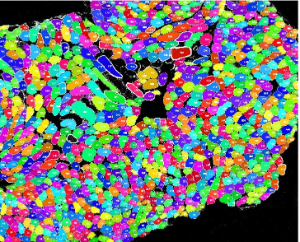News & Events
Talk at the Welcome Centre for Mitochondrial Research

By Atif Khan
Mitochondrial diseases are currently untreatable, one of the reasons for this is that we don’t completely understand their causes and effects (i.e. pathology). One way of understanding mitochondrial disease pathology is to study protein expressions involved in functioning of mitochondria. While advancements in protein imaging technologies now allow us to observe many more mitochondrial proteins than before but finding pattern in this high dimensional data a challenge.
My research focuses on use of machine learning to find patterns in the high dimension mitochondrial protein data and help discover underlying disease pathology. In the first analysis for my research, I used processed protein imaging data with reduced dimensionality to train some machine learning models. And I manage to demonstrate that these models, even with reduced dimensionality, can predict the mitochondrial diseases with considerable accuracy. This point to existence of some pattern in the data that can be used to understand mitochondrial diseases.
Machine learning analysis using processed protein imaging data with reduced dimensionality
My future work is going to focus on building interpretable machine learning analysis pipeline that consist of machine learning models that can i) automatically segment individual muscle cells in the protein images that will improve accuracy and interpretability of the pipeline, and ii) accurately predict mitochondrial diseases using high dimension protein imaging data and possibly other clinical data. We hope knowing the basis of the predictions of these machine learning models can lead to exciting discoveries about mitochondrial disease pathology.

Automatic muscle cells segmentation
Last modified: Thu, 08 Jul 2021 10:30:18 BST
